Improve your experience. We are very sorry but this website does not support Internet Explorer. We recommend using a different browser that is supported such as Google Chrome or Mozilla Firefox .

Yachtmaster Ocean Theory & Qualifying Passage
This course prepares experienced skippers for the prestigious RYA/MCA Yachtmaster Ocean Certificate of Competence. The programme combines the RYA Yachtmaster Ocean Theory course with an exhilarating Pacific ocean qualifying passage.
Description

The syllabus includes celestial navigation, ocean currents, meteorology and ocean passage planning. We make sure that you can use a sextant and know how to reduce sun sights and star sights to find your position.
The crew then gets together to plan the ocean passage. Subject to weather forecasts we aim to make a short coastal passage, followed by an ocean passage to the world heritage listed Lord Howe Island.
Course programme
Week 1 - RYA Yachtmaster Ocean Shorebased theory course Week 2 - Ocean passage planning / Begin ocean passage Week 3 - Ocean qualifying passage Week 4 - Ocean qualifying passage
NB - If you join our December course start date, there is a 3-week break in training over the Christmas period (between weeks 1 and 2) and the ocean passage begins in Hobart, Tasmania and finishes at Middle Harbour Yacht Club in Sydney.
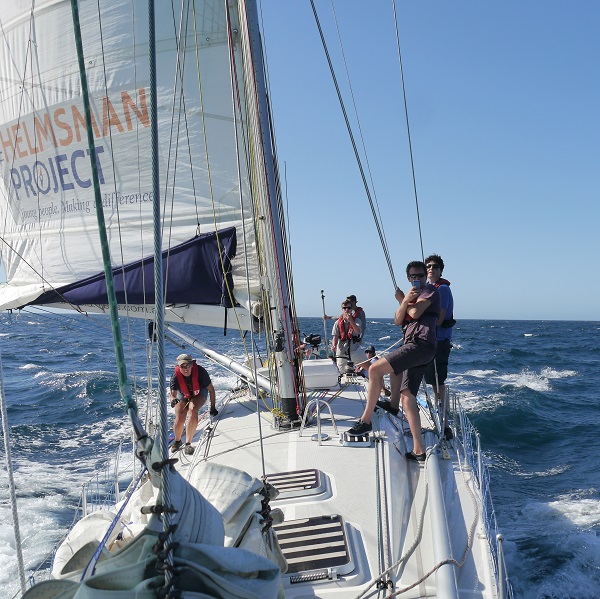
If you join any of our other course dates there is no break in the schedule and the Ocean passage starts and finishes at our base at Middle Harbour Yacht Club in Sydney.
Lord Howe Island
Our Lord Howe Island passage is a blue water ocean sailing adventure to a stunning Pacific island destination.
World Heritage-listed as an area of outstanding natural beauty and named in National Geographic’s ‘Best of the World 2021’ travel list Lord Howe is an absolute jewel in the Pacific with beautiful beaches and a magnificent coral lagoon.
The diving and snorkelling here are world-class and with the visitor numbers limited to just 400 at any one time, the island’s incredible ecosystem is protected now and for the future as ‘the world’s last paradise.
To sail to Lord Howe is a privilege very ever few get to enjoy.
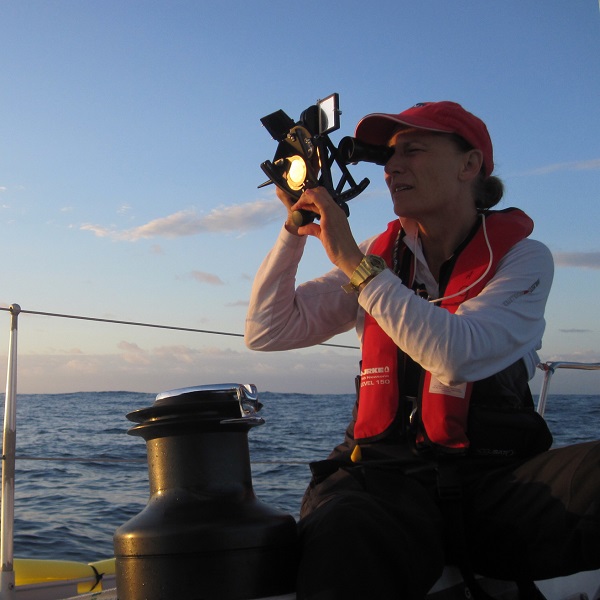
Crew members rotate the role of Acting Skipper or Watch Leader, ensuring everyone logs the required 600 nautical miles qualifying passage in a position of responsibility.
You will experience magnificent seascapes, dolphins, whales and, of course, flying fish! This is offshore sailing at its best.
The yacht and the instructors
Our Lord Howe Island adventures are run on our training vessel SV Arctos which was built for a Southern Ocean circumnavigation and is ideal for a passage like this.
This is a training passage and will be run by two qualified and experienced RYA qualified instructors.
What's included
Meals on yachts, safety equipment, publications, tuition
If you book our December course we include an economy class flight from Sydney to Hobart to start the ocean passage.
Qualifications and experience
- 1,500 sea miles logged
- RYA YM Ocean Shore-based Theory
- RYA YM Ocean Qualifying passage
Before you start
- You are a confident yachtsman or woman who, as a minimum, has taken part in an RYA Coastal Skipper course or had equivalent offshore sailing experience.
- We prefer if all crew members have completed an ISAF-recognized Sea Survival course
Before your oral exam for the RYA Yachtmaster Ocean Certificate of Competence, you must
- Hold the RYA Yachtmaster Offshore Certificate of Competence
- Have completed the RYA Yachtmaster Ocean shore-based theory course
- Have completed a Yachtmaster Ocean qualifying passage.
- Have prepared a narrative of your qualifying passage including details of your navigational sights for submission to the examiner
If you intend to use your Yachtmaster Ocean qualification commercially, be prepared to go for a straightforward medical.
Consider following this course with a Cruising Instructor week to teach yachting at an RYA school like Flying Fish!
Similar courses
STCW Basic Safety Training is required by anyone wishing to work on a commercial vessel greater than 24 m in length. If your aim is to work on superyachts this course is an essential part of your training.
Upon completing this course, you will have a thorough knowledge of all the theory required for the RYA Yachtmaster Offshore Certificate of Competence.
Our Yachtmaster Milebuilders provide the opportunity to log sea miles and qualifying passages in preparation for the RYA Yachtmaster Offshore Certificate assessment. You will take part in a series of extended offshore passages by day and night, operating a watch system on board.
Dayskipper to Yachtmaster Fast-track is designed for confident sailors who have completed RYA Day Skipper or have previous experience as skipper in sheltered waters. It provides an efficient pathway to the Yachtmaster Offshore certificate.
This one-day Australian Communications and Media Authority (ACMA) approved course teaches you to use VHF (Short Range) as well as MF and HF (Long Range) radio for distress, urgency, safety, and general calls. The course includes GMDSS and DSC
Hamilton Island Race Week is one of Australia’s favourite yachting events. Perfectly situated amongst Queensland's Whitsunday Islands, Hamilton Island offers fabulous trade wind sailing conditions in a tropical paradise.
This course has been specifically designed for those working in the marine environment and is ideal for boat owners, watersports instructors, yacht skippers, and crew. The course leads to an internationally recognised first aid qualification.
This is a magnificent voyage and an excellent opportunity for experienced sailors to gain sea miles and offshore qualifying passages, in preparation for assessment for the RYA Yachtmaster Certificate of Competence.
Be part of the crew on an ocean sailing passage to a stunning Pacific island destination. This superb training adventure is ideal for sailors who want to experience the magic of blue-water cruising.
This magnificent one thousand-mile sailing adventure is definitely a Flying Fish favourite. It provides an excellent opportunity for competent sailors to gain sea miles, offshore experience, and qualifying passages, in preparation for the RYA Yachtmaster Certificate of Competence assessment.
Professional Practices and Responsibilities (PPR) is a compulsory online course for qualified RYA Yachtmasters who require a Commercial Endorsement. Ignore the dates shown here!
Learn some tricks of the trade so you can be safe on the race course. Racing with spinnakers is exciting but it also presents new risks. Flying a kite requires the crew to perform a number of tasks in the correct order.
The RYA Coastal Skipper course provides you with the opportunity to develop your seamanship, boat handling and navigation skills offshore by day and night. It is a stepping stone towards the Yachtmaster Certificates of Competence.
This course gives you an overall awareness of the central systems of a marine diesel engine. We teach you how to take simple measures to prevent mechanical breakdown at sea and rectify defects that do not require workshop support.
This course provides intensive training in the practical skills and theoretical knowledge the small boat driver needs. You will learn to drive our rigid inflatable rescue craft.
The RYA Yachtmaster Ocean Shore-based week teaches you ocean passage planning and celestial navigation, including the use of a sextant. You will leave the course confident that you have the knowledge and skills required to navigate an ocean passage using traditional methods.
The Yachtmaster Ocean Fast Track in Sydney first trains you for your RYA Yachtmaster Offshore Certificate. Then, you go on to learn celestial navigation and complete an ocean-qualifying passage in preparation for the RYA Yachtmaster Ocean oral exam.
This course leads to a practical assessment conducted independently by an RYA Yachtmaster Examiner. Depending on your prior skills and experience, your objective may be a Yachtmaster Offshore or Coastal Certificate of Competence.
Our Superyacht Steward/ess course at Flying Fish UK provides the essential skills and qualifications needed to start working as a Superyacht Steward or Stewardess. It's the perfect springboard you need to enter the industry with confidence.
The world-famous 628-mile Sydney to Hobart Yacht Race is renowned for being the Everest of amateur yacht racing. Each year, around 130 yachts come together to do battle with the competition and with the elements. Completing a Sydney to Hobart race ticks a big box on your sailing resume.
This two-day course meets the requirements of World Sailing (formerly ISAF), RYA and AS for crew planning to take part in offshore yacht races like the Sydney to Hobart race. The course is also highly recommended for anyone going to sea for any purpose.
This self-paced online course provides a beginner's introduction to the navigation theory and safety knowledge required to go boating safely at sea.
This course provides a grounding in the essential maintenance tasks required to keep a modern cruising yacht on the water.
This course is for anyone at or above the RYA Day Skipper standard who wants to develop their boat handling, seamanship, and navigation skills and confidence as a skipper.
The Yachtmaster Coastal Fast-Track in Sydney takes you from novice sailor to RYA Yachtmaster Coastal Certificate of Competence.
The Flying Fish Yachtmaster Offshore Fast Track in Sydney takes you from novice sailor to the RYA Yachtmaster Certificate of Competence.
The Sydney Harbour Regatta is Australia's premier inshore yacht racing event. The exhilarating race programme on the water is matched only by the fantastic 'après sail' social scene at Middle Harbour Yacht Club.
This passage meets the requirements of the Cruising Yacht Club of Australia for crew qualification for the Sydney to Hobart race. It is also a great mile builder for aspiring Yachtmasters.
Sail the iconic route from Hobart to Sydney in on our impressive, cutter rigged, Sydney to Hobart race yacht Arctos.
This is a re-validation course for those who have completed the two-day AS/World Sailing Offshore Safety and Sea Survival course but whose certificates will soon expire.
Our Superyacht Deckhand course at Flying Fish UK is packed full of the essential qualifications and skills required by the deck crew on a superyacht. It provides a superb springboard into your first job.
This internship offers seasoned watersports instructors an unparalleled chance to embark on a comprehensive two-year work-study journey, culminating in certifications as a Yachtmaster Ocean and RYA Cruising Instructor. Set in an idyllic location, this program promises an enriching, career-enhancing experience in an inspiring environment. It is also a highly cost effective way of training.
Join our Whitsundays Sailing Adventure course and learn to sail or refresh your skills in one of the world's most stunning sailing locations. Escape the winter chills and enjoy a memorable week sailing in paradise with us. Learn as much as you want from our friendly instructor or relax as hard as you like!
Press enter to see more results
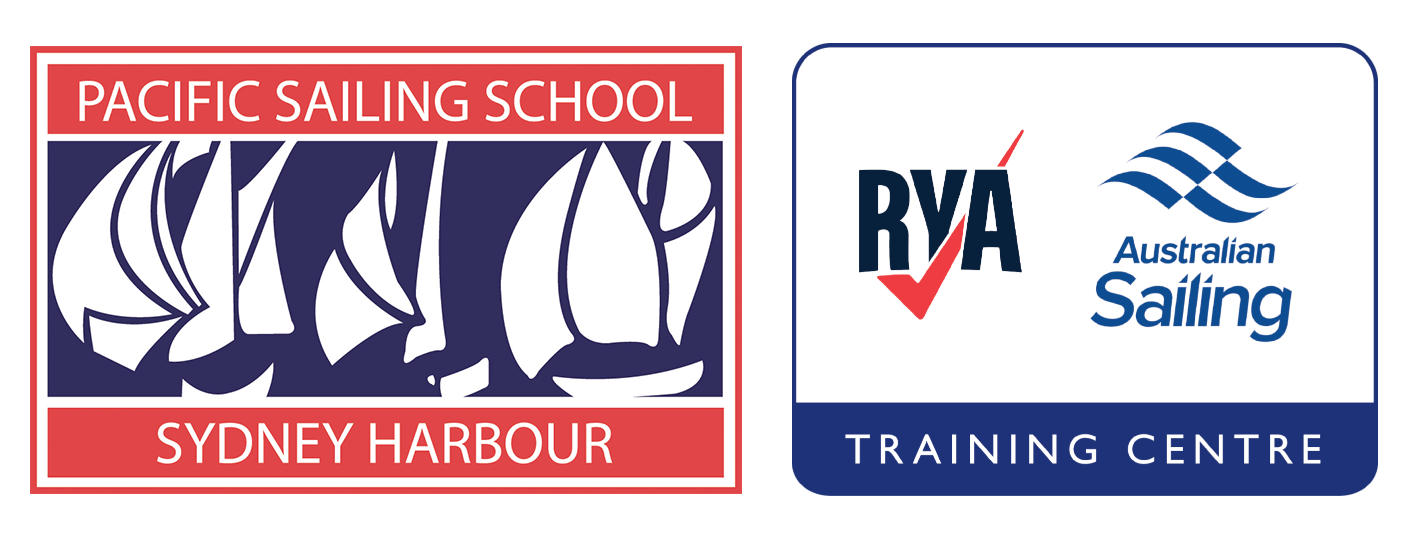
RYA Coastal Skipper/Yachtmaster Shorebased Course
Book a course, course summary.
Course provided by Pacific Sailing School
Located at the Cruising Yacht Club of Australia
Course certificate and materials included
Course Dates
Yachtmaster Preparation plus Exam
- Virtual & Online
- Online only
RYA Coastal Skipper/Yachtmaster
eLearning and Virtual Shorebased Theory Course
The RYA Coastal Skipper / Yachtmaster eLearning and Virtual Shorebased theory course build on the basics of navigation, meteorology and passage making taught in the RYA Day Skipper course. This advanced knowledge level is perfect for students wishing to progress to the RYA practical courses and the RYA/MCA Yachtmaster Certificate of Competence.
It is an intensive course covering advanced navigation techniques including – position fixing, course shaping and plotting, tidal knowledge including secondary port calculations, navigation in restricted visibility, Admiralty publications and electronic position finding equipment. Meteorology includes getting and the interpretation of forecasts, the plotting of weather systems, weather prediction and electronic navigation.
You will learn to use all the available information and electronic navigation systems for planning and executing passage plans. The International Regulations for Prevention of Collision at Sea are covered in detail, and we will also learn more about yacht stability and safety offshore.
It is strongly recommended that students have a good grasp of theory subjects to Day Skipper standard and have a good knowledge of the collision regulations before attending.
SPECIAL OFFER
Book RYA Coastal Skipper / Yachtmaster Offshore eLearning and virtual theory course and the 5 day practical at the same time - receive a 10% discount on the theory and a 5% discount on the practical! (N/A online - contact our office to book)
E-LEARNING AND VIRTUAL THEORY COURSE:
The blended eLearning and virtual course includes 16 modules and is blended with six – three-hour virtual sessions plus exams.
Revisit exercises at any time, ask questions, your eLearning instructor can help ensure you are using these skills whenever you are skippering and passage planning for your next adventures. The online course can be completed at your own pace and revisited to refresh at any time in the future.
During the virtual sessions, the more challenging topics are taught to increase your knowledge in advance of completing the e-learning questions. This can enable a deeper understanding and help to reduce the time to complete the exercises. In addition, the instructor adds to the course with real life examples of the subjects covered.
This unique course is accessible from anywhere in the Southern Hemisphere. The virtual training sessions are run from 1800 to 2100 (Sydney time) midweek evenings this is the course for you. The course is first class and delivered by our expert RYA Yachtmaster Instructors.
- Enrolment in our partner, Above & Beyond Boating RYA Coastal Skipper / Yachtmaster e-learning course and Pacific Sailing School Virtual training.
- Express posted training materials that include – RYA Training Almanac and RYA Chart 5 & 6.
eLearning Shorebased Theory Course
The RYA Coastal Skipper / Yachtmaster eLearning theory course build on the basics of navigation, meteorology and passage making taught in the RYA Day Skipper course. This advanced knowledge level is perfect for students wishing to progress to the RYA practical courses and the RYA/MCA Yachtmaster Certificate of Competence.
You will learn to use all the available information when planning and executing passage plans. The International Regulations for Prevention of Collision at Sea are covered in detail, and we will also learn more about yacht stability and safety offshore.
E-LEARNING THEORY COURSE:
This eLearning course includes 16 modules plus exams.
This unique course is accessible from anywhere in the Southern Hemisphere. The course is first class and delivered by our expert RYA Yachtmaster Instructors.
- Enrolment in our partner, Above & Beyond Boating RYA Coastal Skipper / Yachtmaster e-learning course.

RYA Sailing Courses Australia
Rya courses, escape the rat race and explore the world from the sea. discover how today, set sail on your next adventure, achieve globally recognised certification with rya courses.
At Sunshine Sailing Australia , we offer a comprehensive range of RYA (Royal Yachting Association) courses designed to provide you with internationally recognised sailing qualifications. Whether you are a beginner looking to start your sailing journey or an experienced sailor aiming to advance your skills, our RYA courses cater to all levels of experience and ambition.

Why Choose RYA Certification?
The RYA certification is highly regarded worldwide, ensuring that your qualifications are recognized wherever your sailing adventures take you. The structured RYA training program is designed to build your skills progressively, providing you with the confidence and competence to handle various sailing scenarios safely and effectively.
Key Features of RYA Courses
- Internationally Recognised Certification RYA qualifications are respected and accepted globally.
- Comprehensive Curriculum Each course is designed to provide a thorough understanding of sailing techniques, safety procedures, and navigational skills.
- Experienced Instructors Learn from RYA-certified instructors with extensive sailing experience.
- Flexible Scheduling Courses are available throughout the year, allowing you to choose a schedule that fits your lifestyle.
- Hands-On Training Gain practical experience on the water, ensuring you are well-prepared for real-world sailing situations.
Many of our RYA courses, such as the RYA Day Skipper, prepare you for the International Certificate of Competence (ICC) . Obtaining an ICC is essential for those planning to sail in European waters or charter boats internationally. Learn more about how our RYA courses can help you achieve ICC certification.
The RYA certification is highly regarded worldwide, ensuring that your qualifications are recognised wherever your sailing adventures take you. The structured RYA training program is designed to build your skills progressively, providing you with the confidence and competence to handle various sailing scenarios safely and effectively.
Many of our RYA courses, such as the RYA Day Skipper , prepare you for the International Certificate of Competence (ICC) . Obtaining an ICC is essential for those planning to sail in European waters or charter boats internationally. Learn more about how our RYA courses can help you achieve ICC certification .
yacht master yachtmaster sailing courses sydney offshore sailing australia sailing master yachtmaster courses australiarya yachtmaster
Internationally Recognised Certification
RYA qualifications are respected and accepted globally.
Comprehensive Curriculum
Each course is designed to provide a thorough understanding of sailing techniques, safety procedures, and navigational skills.
Experienced Instructors
Learn from RYA-certified instructors with extensive sailing experience.
Flexible Scheduling
Courses are available throughout the year, allowing you to choose a schedule that fits your lifestyle.
Hands-On Training
Gain practical experience on the water, ensuring you are well-prepared for real-world sailing situations.
Explore Our RYA Courses
- RYA Competent Crew
The RYA Competent Crew course is perfect for those new to sailing. This foundational course teaches basic seamanship and helmsmanship, making you an effective crew member on a yacht. It’s the first step towards becoming a competent sailor.
- RYA Day Skipper
The RYA Day Skipper course is ideal for sailors with some experience who want to take on more responsibility on board. This course covers navigation, pilotage, and boat handling under power and sail, providing the skills needed to skipper a yacht in familiar waters.
- RYA Coastal Skipper
The RYA Coastal Skipper course at Sunshine Sailing Australia is designed for advanced sailors ready to elevate their skills. Offered in Brisbane, the Gold Coast, the Sunshine Coast, and Moreton Bay, this course focuses on advanced navigation, passage planning, and pilotage. You’ll gain hands-on experience in complex decision-making and yacht management, preparing you to skipper a yacht on longer coastal and offshore passages. This comprehensive program ensures you are well-prepared for the RYA Yachtmaster examination and beyond.
RYA Yachtmaster Courses
Our Yachtmaster courses in Australia are designed for experienced sailors looking to achieve one of the most respected sailing qualifications. We offer both Yachtmaster Coastal and Yachtmaster Offshore courses, each tailored to prepare you for the rigorous Yachtmaster exam.
RYA Training Programs
Our RYA training programs include a variety of courses aimed at different skill levels and sailing goals. From introductory courses to advanced training, our programs are designed to help you progress through the RYA certification pathway.
Yachtmaster Courses Australia
Sunshine Sailing Australia offers comprehensive Yachtmaster courses in Australia. These courses are designed to provide the advanced skills and knowledge required for the Yachtmaster certification. Our experienced instructors will guide you through the rigorous training process, ensuring you are fully prepared for the Yachtmaster exam.
RYA Courses:
- RYA Coastal Skipper/Yachtmaster Offshore Theory
- RYA Competent Crew – Catamaran
- RYA Competent Crew – Monohull
- RYA Day Skipper Monohull
- RYA Day Skipper Theory – Online
- RYA Essential Navigation – Online
- RYA Start Yachting
- RYA Day Skipper Catamaran
- RYA Power Boat Level 2 Course
- RYA Diesel Engines
If you’re planning to sail internationally, obtaining the right certification is essential. Our International Certificate of Competence ( ICC ) is designed to help you meet the requirements for sailing in European waters and beyond. Whether you’re looking to get your ICC certification through practical assessment or by completing our RYA Day Skipper course, we provide all the training you need to achieve your ICC Certificate. Prepare for your sailing adventures with confidence by obtaining your International Certificate of Competence ( ICC ) through Sunshine Sailing Australia.
Why Choose Sunshine Sailing Australia for RYA Training?
At Sunshine Sailing Australia , we are committed to providing the highest quality sailing education. Our RYA training courses are delivered by experienced instructors who are passionate about sailing and teaching. Whether you aim to become a skilled crew member or a confident skipper, our courses are designed to help you achieve your sailing goals.
Start your journey with us today and gain the internationally recognised RYA certification that will open doors to sailing opportunities worldwide. Get in touch with us to learn more about our RYA courses and how we can help you achieve your sailing ambitions.

Sunshine Sailing Australia | Learn to Sail
Typically replies within minutes
We are here, just reach out with any questions.
WhatsApp Us
🟢 Online | Privacy policy
WhatsApp us
Yachting Monthly
- Digital edition

How to pass your Yachtmaster Practical Exam
- Theo Stocker
- August 22, 2024
Theo Stocker is put through his paces on an RYA Yachtmaster Offshore prep week, before taking the exam itself. Find out how he got on

The RYA Yachtmaster Offshore has long been the qualification that cruising yacht sailors, both amateur and professional, have aspired to. Quite aside from the fact that it is the gateway to working in the yachting industry if the desire so takes you, it is good to know that you have mastered the sweep of skills and experience necessary for you to be deemed competent at skippering a sailing yacht.
I’ve wanted to test myself and see if I was up to scratch for years, and I finally got the courage up to put my skills under the spotlight earlier this summer. I was going to be taking the test with my friend Andrew, as we’d been talking about doing our Yachtmaster for two decades.
Last month I shared my experience of preparing for a Yachtmaster exam to get our rusty skills and knowledge back up to standard, and to check that there weren’t any major holes in our repertoire. Now that the RYA Yachtmaster scheme has turned 50, we were also interested to see how things have changed with technology.
Things like chartplotters and mobile internet have made some areas massively easier, but bring their own challenges, and in the first part, we discovered that navigating these systems and knowing what information to trust requires just as many skills and as much judgement as the old methods.
If anything, they also bring more opportunity for distraction from the real world with plenty of potential for making navigationally serious mistakes. The standard for passing the RYA Yachtmaster Offshore exam is just as demanding as it ever was.
Having looked at safety briefs, marina boat handling, navigation and pilotage, it was now time to move onto boat handling under sail, the more critical safety manoeuvres, as well as some of the softer skills involved in skippering a crew. The exam was looming…

The Yachtmaster crew (L-R): Matt Sillars, Andrew Eastham, Row Staples, Theo Stocker
Skippering the boat
Part of the reason for having our supercrew, Row, on board for the prep week was that it’s all well and good sailing solo, but a skipper needs to be able to lead and manage a crew safely, and ideally create an atmosphere on board that is harmonious, effective and enjoyable, striking the right balance between being clearly in control, facilitating everyone to play their part, and enjoying life at sea.
A huge part of this is around good, early communication in the inevitable form of briefings. Now, this isn’t patronisingly sitting everyone down and telling them to do things they are totally capable of doing, but of communicating what you want to happen, before it happens.
Briefings can be brief and on-the-go, as long as they are clear and you are confident your crew understand. It also demands some degree of foresight and competence on your part – if you haven’t anticipated something, you can’t brief for it. Whether it’s leaving a berth, setting sail or fighting a fire, everyone having a job and being equipped with the skills to do their jobs should engender a satisfying sense of competence and achievement for everyone involved.
Article continues below…

How to prepare for your Yachtmaster Offshore exam
Many very competent and highly experienced yachtsmen and women don’t have any qualifications at all and are content to keep…
Andrew and I were struck by how much we’re both used to just getting on and doing stuff on our own boats, either by ourselves, or without making sure the crew know what we’re thinking. Talking out loud was a helpful habit during the week. In marina manoeuvres, we tried to warn crew on the foredeck that we were about to turn, or go astern, so as not to unbalance them, and our coming alongsides were a lot smoother when everyone knew what order to get the lines across in.

Make sure there’s cake and coffee – especially during your exam
Soft skills
Whether you’re sailing with strangers you’ve never met before, or with your family who know your flaws only too well and are occasionally good enough to point these out to you, managing interpersonal relationships on board is a skill that’s hard to teach but critical to a safe and happy crew. The more competent and in control you feel, the easier this will be, and thinking ahead will help you keep your stress levels down.
Under the eye of an instructor or examiner, we were of course on our best behaviour. It helped that all of us genuinely enjoyed our time on board and each other’s company, but thinking through what your crew may be feeling or thinking will help. Swallow your pride and do some of the jobs others might not enjoy.
As long as the boat is under control and you’ve got some capacity, make everyone a cup of tea and offer the choccy round. Give people things to do, but let them rest when they need a break too. Make sure they’ve all got suncream on. Keeping an eye on their wellbeing isn’t always easy when you’re nervous, stressed, or don’t quite know where you are.

Briefings can be informal, as long as your crew is clear about what’s happening and what to do
Command and safety
At the same time, you are responsible for keeping the boat safe. There will be times when you need to make it clear who is in charge, and what you are and are not happy with on board. Andrew and I are used to scampering around a boat, but reminding each other to clip on before going forward for a man overboard, or finding a safe way to adjust the mainsail leech line was a useful reminder to err on the side of caution. Demonstrate that you can pre-empt risks and avoid or mitigate for them.

Boat husbandry and housekeeping
Serious problems on board are more likely if you don’t keep on top of the little things. We worked hard to make sure the boat was in a good state during the week; tidy the galley up and stow the crockery before you set sail, coil the halyards and lines away once you’ve finished reefing. A snake’s wedding in the cockpit is going to lead to jammed lines and tangled feet. If you’re happy with the picture of where the boat is and how she’s sailing, look around you to make sure the details are right too.

Shout man overboard and point at the casualty. Crash tack to stop the boat
Man overboard
Man overboard is just about one of the most serious events that can happen on board a cruising yacht at sea. Getting them out of the water as quickly as possible is of paramount importance. When I last did a sailing course nearly two decades ago, the drills were the same as they’ve always been – choose whether you want to get back to the MOB under sail or engine, do your manoeuvre, then fish out the fender and bucket with a boathook.
I’ve spent some time for the magazine testing not only the sequence of actions in this manouevre but how you then actually get the casualty out of the water, and was chastened by just how hard it really is to lift a dead-weight casualty from the water onto deck, especially if they are incapacitated.
I was encouraged, therefore, that the RYA’s approach to MOB training has moved on, breaking it down into three areas: preventing man overboard in the first place, getting back to the casualty, and getting them out of the water.
The usual points of minimising time on deck, clipping on in rough weather or when alone on deck, only going forward on the windward side, and all the other precautions, are something to drill into your crew, and as skipper, it’s important to ensure a safe culture on board.

You can still practise with a fender, but getting back to it is only half the job
Man overboards are no longer taught exclusively under sail. Yes, we practised sailing back to a fender in the water, but this should only ever be as a backup to the fastest and most reliable way to get to your MOB, and on boats with engines, that is under power.
The order in which we did the drill during our training was as follows:
- Raise the alarm – Shout man overboard and point at the casualty.
- Stop the boat – Stop the boat by crash-tacking to heave to, and ensure crew don’t release the sheets. At this point you are close to the MOB and under control.
- Mark the mob – Throw in the horseshoe and danbuoy, then allocate someone to point at the MOB. At this stage you should also be able to communicate with them.
- Make a distress call – Someone can then go below to hit the VHF DSC distress button and to mark the MOB on the plotter, but don’t bother with a voice Mayday call at this point – it’s too slow unless you have a large crew.
- Start the engine – Check the lines are clear, start the engine, furl the jib and centre the main.
- Prepare for recovery – As you motor round, the crew can get the MOB recovery kit ready – a grab bag in the cockpit locker contained a 6:1 handy billy with a sling already attached.
- Rig the handy billy – The handy billy is hoisted on a spinnaker halyard, and guyed forwards to stop it swinging – we used the spinnaker pole downhaul, but a clip to the shroud might also work. The tail can be taken to a primary winch via a turning block if extra power is needed. Before crew go forward, they should clip on to prevent a second MOB, so have tethers in the bag too.
- Depower the main – Once downwind of the MOB, come onto a close reach and the main can be eased out with the deck crew forward of the shroud, and if a topping lift is fitted, scandalise the boom to keep it clear of heads. If you’ve got lazy jacks, you could drop the main, but don’t drop the main onto deck where everyone will be working.
- Approach and attach – As you come to the MOB, aim upwind and drift down. A loop of rope can be thrown over the casualty, which will be easier than trying to catch them with a flimsy boathook.
- Hoist them aboard – Get them to put the sling on if they can, or use the loop of rope secured to the handy billy to hoist them. A floating loop of line pre-attached to their lifejacket, like the MOB Lifesaver, would also speed things up here. If they’ve not been in the water long, and you’re only doing a short lift, focus on getting them out of the water rather than keeping them horizontal.

Stop the boat by crash-tacking to heave to without easing the sheets. You should then be stopped, under control and close to the MOB
Practise alongside
It’s a highly informative process to try out this last part whilst alongside in the marina, with the ‘casualty’ a real person lying on the pontoon. While they would be wet, heavier and needing lifting further in real life, this is a very safe and controlled way of practising with your system and adjusting it until everyone is happy they know what to do.
Having done this exercise now, I am keen to do a full man overboard drill at the start of every season and at the start of every trip so that everyone on board knows what to do – it is this practice that is the deciding factor in whether you can get an MOB back or not.

Once you’re used to lassoing, it’s almost easier than using a boat hook
Manoeuvres under sail – picking up a fender
Sailing back to a fender is a good skill to have, were your engine to fail during a MOB – a line wrapping around the prop, for example – or just to get back to a favourite hat or fender that’s gone overboard. It’s like sailing onto a mooring, but easier in many ways without having to factor in the tide.
The basic principle is that you want to approach on a close reach with enough space to slow down and arrive under control, able to spill all the power from the main. There are two slight variations in that you can bear away on a broad reach to start with as you sail away from the fender, or you can reach away, then dip downwind after the tack. If you do the latter, the dip down will need to be a significant bear away.
As you’ll be sending crew forward to the shrouds, you’ll still need to furl the jib and scandalise the main on your final approach. I managed to get myself confused once or twice and went to put the fender on the windward bow like a mooring, which isn’t going to work.

Picking up a mooring under sail is a satisfying skill to master. Put the buoy on your windward bow so it doesn’t drag you into a gybe
Mooring under sail
There are a few manoeuvres that everyone should be able to do. While you may rarely sail onto a mooring buoy, knowing how to do so is a good skill to have should you have engine trouble or just for showing off. At the same time, it’s a good indicator of a sailor’s feel for the boat and how it will respond to the elements.
When approaching into wind and tide together, our Jeanneau Sun Odyssey 37 from 2008 had a fairly shallow forefoot, so as soon as our speed dropped off, the bow tended to pay off quickly.
You don’t want a flogging genoa over the crew on the foredeck either, so furling the genoa away is a good option, but you will sail slower and with more leeway, so need to be slightly higher upwind than you first anticipate.
With wind and tide opposed, you would clearly approach under genoa alone, but with wind and tide at roughly right angles, you’ll need to judge which approach is needed. There were two factors that caught us out a couple of times, interestingly more important in lighter airs.
The first is that as the boat slows down the tide becomes proportionally more important, and secondly, at the same time apparent wind will decrease and move aft, further filling the mainsail. The lesson was to prepare for a wind-against-tide approach much more readily than we might otherwise have done.

You may find yourself having to sail back into harbour with engine problems.
Sailing onto a pontoon
You are unlikely ever to sail into a marina finger berth and I wouldn’t advise trying. You may, however, find yourself having to sail back into harbour with engine problems. While a Pan Pan call is pretty ubiquitous these days, a Yachtmaster should be able to deal with engine problems at sea, and if not, to sail themselves back into harbour rather than depending on being rescued.
Most harbours will have a pontoon or berth with a relatively open approach, and it’s reasonable to expect to be able to sail onto it. The calculation of which approach to use is much the same as for picking up moorings under sail, though with other boats around and a solid pontoon to hit, the consequences of getting it wrong are higher. Handling a boat in confined waters means you’ll need to keep control at low speeds, and be thinking ahead about escape routes if it’s not going according to plan.
For us, sailing on the mid-river pontoon opposite Warsash at the bottom of the Hamble river offered a good open approach, and just enough wind to get away with a wind-and-tide together approach, though a genoa-only approach may have been safer.

A properly guyed pole is a more seaworthy setup than just clipping the pole onto the sheet
Sailing downwind
The dangers of a crash gybe are well known, particularly from the mainsheet and boom scything across the boat, with a high potential to damage both crew and boat. I had sailed a bit close to a gybe with the jib collapsing earlier in the week, and when I had intentionally gybed, I hadn’t fully centred the main.
Although no harm was done, the boom did clatter across noisily. Matt gave a stern warning about the dim view an examiner would take of this – a potential instant fail – and we agreed that looking at rigging for downwind legs would be worthwhile, including both preventer and poling out the genoa.
Rigging a preventer
Rigging a preventer is relatively straightforward. We chose the longest, strongest line we had on board in the form of a spinnaker sheet. This was led from the end of the boom, where it was secured with a round turn and two half hitches – both a strong knot and easily released under load – then forward outside everything to the bow fairlead, and then aft to a cockpit winch.

It takes a little bit of rigging, but if the result is a much safer and more manoeuvrable setup, then it’s worth doing, even on relatively short legs
When poling out a headsail in the past, I’ve always set the pole using the pole uphaul and downhaul then clipped the sheet into the end then unfurled the headsail. This works fine in settled conditions for short legs clear of shipping. Were you to need to gybe, change course, or furl away the headsail quickly, however, it would leave you with the dangerous proposition of a loose, heavy pole potentially swinging freely on the foredeck that also prevents you sheeting the sail in for an upwind course without first unclipping it from the pole.
Coming up with a solution
Matt set us the task of rigging the pole in such a way that it could be locked in position whether the sail was set or not, and that the headsail could be sheeted in for upwind sailing without going forward to unrig the pole. After a bit of head scratching, we found a solution.
The pole could be held in position by the pole uphaul, the downhaul, which served to pull the pole forwards and down, and an additional aft guy, which was an extra line taken from the pole end to the aft mooring cleat. We attached a third sheet, in the form of a spinnaker sheet, to the jib’s clew, through the pole, and aft to a spinnaker block at the stern and then onto a primary winch.
The result was that chafe was minimised, the pole could be locked in position whether the sail was set or not, and if we did need to gybe or sail upwind, the normal jib sheets still had a proper lead, albeit the pole would need to be held aft and the headsail with a couple of reefs to keep it clear of the pole.

With examiner Andy Wright aboard, the exam was finally underway
The day of the exam
The exam starts a day or two before the examiner turns up, in that he or she may want to see a passage plan you’ve prepared in advance. If this is the case, the examiner will have passed the information to you via the school providing the training.
It’s best to do this two or three days before the exam so you haven’t got a last-minute panic, but not too far in advance that you’ve forgotten the sums you’ve done and why you made the choices you did. I was set a passage from Bembridge to St Vaast on the Cherbourg peninsula, giving me a potentially fiddly drying harbour at either end, though the forecast given was a conveniently favourable Westerly Force 4-5. With passage plan complete, and some last-minute swotting up on lights, shapes and sounds, Andrew and I retired for an early night.
After the windless drizzle of the day before, Friday dawned bright and breezy with a forecast of a good Force 5 from the southwest and plenty of sunshine – enough that we’d have to be on our toes, but at least something we could get our teeth into. Matt had reassured us that making mistakes wasn’t the end of the world during the exam, if we showed competence in getting ourselves back on track.

Andrew gives the crew an on-deck safety briefing, including the MOB recovery kit
Minor mistakes are to be expected and it’s more important how you respond to your own mistake. The only sorts of things that would probably be an outright fail, other than flunking our lights and shapes, are safety critical things such as a collision, running aground, an inability to navigate and pilot, or an uncontrolled gybe.
We were joined at 0900 by our examiner Andy Wright, an RYA Yachtmaster instructor trainer, examiner and centre inspector, an MCA Master 200 who works as an RNLI area lifesaving manager and who also volunteers with the Rona sailing project. There’d be no ‘getting away with it’ here.
We began the day with a coffee and chat, and Andy spent some time asking about our reasons for taking the exam, before laying out what he would be looking for. ‘I’m not going to be trying to catch anyone out, but what I want to see you demonstrate is that you can skipper the boat, navigate the boat, handle the boat under power and handle the boat under sail.’

Andrew talks examiner Andy through his pre-prepared passage plan
The safety briefings
We began, as we had with our prep week, with safety briefs, with Andy and I splitting above and below decks.
With the engine bay open, Andy took time to probe our knowledge of engine troubleshooting, asking us to point out various parts of the engine, the different significance of blue, black or white smoke from the exhaust (incomplete combustion, burning oil and overheating, by the way), and how to change filters, impellers and belts and how to bleed the fuel.
On deck, we were asked to explain when and why each kind of flare would be used. None of it felt overly pressured, but it was certainly an in-depth examination of our knowledge.
During the day, these conversations continued as he drew information out of us in areas that were not being practically demonstrated on the day – 15-20 minutes on lights, shapes, sounds and collision avoidance, including how we’d handle different scenarios in traffic separation schemes.

Andrew points out where the MOB handy billy and sling is during his safety brief
He asked us to talk through our passage plans, and then went further to see whether we knew if the boat we were on was legally allowed to do so, and what the administrative and immigration requirements would be on either side of the Channel – a tricky one given the ongoing chaos and confusion that surrounds small boat crossings these days.
Being tested underway
In between these chats, we got underway. First with our marina manoeuvres in and out of a selection of increasingly tricky berths, putting the boat into positions that we might not have chosen, including a berth two space into a gulley with a yacht moored either side of the space and a boat opposite. Ferry gliding in bows-first wasn’t too tricky, but with wind and tide pushing us on, getting out again was harder. I opted to use prop walk to pull the stern out against a bow line – slightly unconventional, and it needed a bit of oomph to keep our bows clear, but I got away without a collision.
We then had half an hour or so to each prepare a short passage plan and pilotage from each end, this time from Hamble to Portsmouth and back. As these weren’t Andrew’s home waters, he was relieved that I was going first.

Navigating the boat, piloting into Portsmouth, and recovering a MOB kept Theo on his toes
I know Portsmouth well, but hadn’t been in for a while. With a plan complete, Andy asked me to explain the route I’d chosen. While I had the route in the chartplotter, I’d picked waypoints near easy-to-find buoys so I could see I was in the right place from the cockpit, and I’d elected not to cut the corner over the shallows off Hill Head to keep us clear of a lee shore.
I’d also have to use the Outer Swashway on the way in, as we’d be close to low water and lacking depth by about 0.3m to get in via the Inner Swashway.
Emergency on passage
Underway, and with Row on the wheel, I had decisions to make about how many reefs to put in, and I was torn between sailing the boat properly and being overly cautious. Starting with one reef, with the breeze creeping upwards, life was comfier with two reefs in. I had to stop myself from any gung-ho attempts to tighten leech lines, electing for a quick heave-to to sort them out. Coffees needed to keep on flowing during the passage, and lunchtime was upon us before I knew it.

We needed to devise a rock-solid passage plan
While the pasties were heating in the oven, there was time for a fix on the chart, or would have been had the fender not fallen overboard. We went through our drill and I was relieved to get back to the MOB first go. Andrew and Row looked at me to see if we were doing ‘the whole thing’ and as Andy hadn’t flinched, we rigged the handy billy, attached the fender to the sling and hauled away until it was safely aboard – it’s a complex process that really does need practice, but it had gone well.
A sense of relief
Once safely in Portsmouth Harbour, it was my turn to find and pick up a mooring buoy under sail. Tied up and handing over skippering duty to Andrew for his turn in the hot seat, I suddenly felt a wave of relief that my passage, pilotage and handling seemed to have gone okay. It was only early afternoon, however, and we wouldn’t be finished until we’d done our night navigation.

There was a fresh breeze from the southwest for the passage to Portsmouth
Andrew’s passage went well, too, in a building breeze that was more on the nose on the way back, while I was below wrestling with getting a tray of meatballs and sauce into a wildly swinging oven. I’m ashamed to say that when it was Andrew’s turn at MOB, despite a flawless approach, I messed up the lasso and missed the fender. Sorry, friend.
Night navigation
By the time we were back on a mooring inside Calshot Spit it was time for dinner and a brief respite, before plunging on into our night nav exercises.
Much like earlier in the week, we were asked to navigate to unmarked locations and Andy gave us a bit of time to prepare these. While we were doing this, he also checked our knowledge of how the radar worked for collision avoidance and for navigation, and how to extract relevant information from both the chartplotter and the AIS.
My night nav began well, using multiple sources of position information as requested, and just about making sense of my hastily drawn sketch and notes, looking for the characteristics of particular lights (you’ll need to know how quick VQ compared to just Q really is) and using the radar to plot our course.

Andrew plots a visual fix as the sun starts to set
As it was top of the tide, however, every ship in Southampton seemed determined to set sail, including the maiden voyage of the Queen Mary cruise liner with attendant tugs, police launches and party boats following behind. Cowering at the side of the channel, my plan was thrown into disarray and I lost the plot on radar, and we were blinded by disco balls and oil terminal lights alike. Luckily, Navionics is by no means banned, and a quick range and bearing in the palm of my hand gave me a course and distance to my imaginary point. Another step closer.
Still, Andrew needed to pilot us up the Hamble River, where Hamble Point’s sector lights can be easily lost in the welter of shore lights, and I was asked to bring the boat alongside, stern first at the end of a long gulley, giving me another chance to mess things up, right up to the last minute.

Back at Calshot darkness falls ahead of the night navigation exercises
But with the boat tied up and put to bed, Andy took each of us off for a quick chat on the pontoon. Fortunately, he was pleased with how we had done and broke the news that we had both passed. Phew – mission accomplished!
We could finally open those beers and enjoy what we had just achieved. Both of us had found the week intense, all-absorbing and demanding – perhaps unsurprisingly. As a result, we felt that we’d been forced to up our game when it came to our sailing and skippering, and our skills had been updated by a decade or two.
We were now much better-rounded skippers than we’d been before. There were lots of learnings and some new skills to take back to our own boats, too, but we had also had a fun week along the way.
Enjoyed reading this?
A subscription to Yachting Monthly magazine costs around 40% less than the cover price, so you can save money compared to buying single issues .
Print and digital editions are available through Magazines Direct – where you can also find the latest deals .
YM is packed with information to help you get the most from your time on the water.
- Take your seamanship to the next level with tips, advice and skills from our experts
- Impartial in-depth reviews of the latest yachts and equipment
- Cruising guides to help you reach those dream destinations
Follow us on Facebook , Twitter and Instagram.

Impartial training and careers advice
Call us: +441983 280 641
+441983 280 641

Start a new career as a Yachtmaster
Want to get your RYA Yachtmaster qualification? We have some options whether to help you reach your goal!
- Yachtmaster
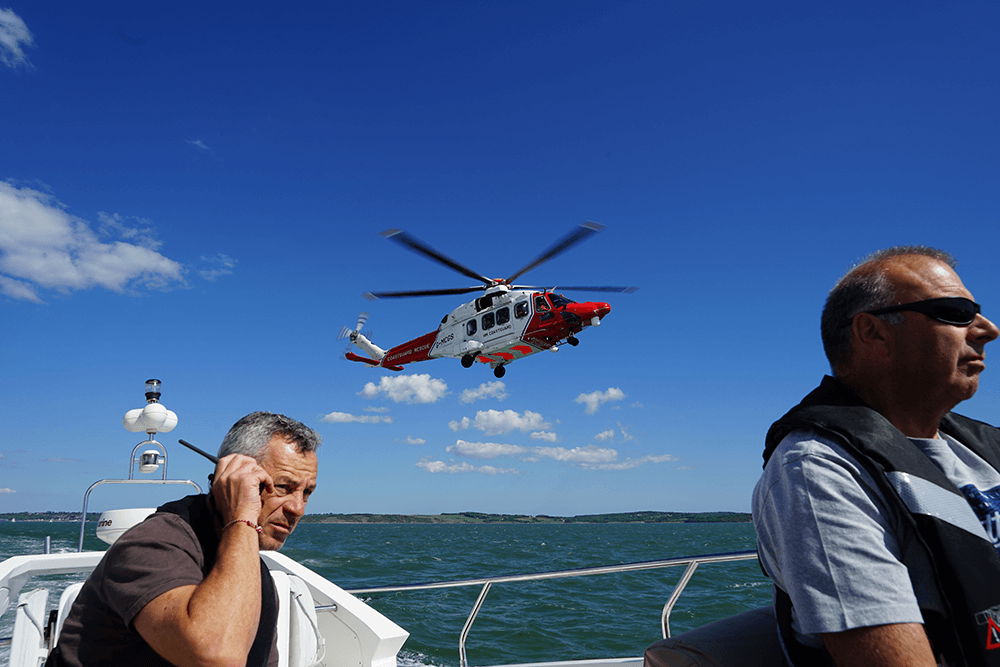
What is a Yachtmaster?
The RYA Yachtmaster is a certificate of competence for skippers of sail or motor yachts who have demonstrated the highest level of knowledge, skill, and experience in yacht handling and navigation.
Benefits of becoming an RYA Yachtmaster
The qualification can open many doors and opportunities, such as:
- Recognition: The Yachtmaster certification is recognized worldwide as a professional skipper’s qualification.
- Employment: With the RYA Yachtmaster under your belt you can begin a career as a professional skipper, whether that is on a sailing, motor yacht or Superyacht.
- Personal achievement: Becoming an RYA Yachtmaster is a significant personal achievement and demonstrates your dedication and commitment to the industry. The Yachtmaster certification equips you with the knowledge and skills to sail confidently and safely, both in coastal waters and on long offshore passages.
- Confidence: This can provide peace of mind and a sense of security when sailing with others or on your own.
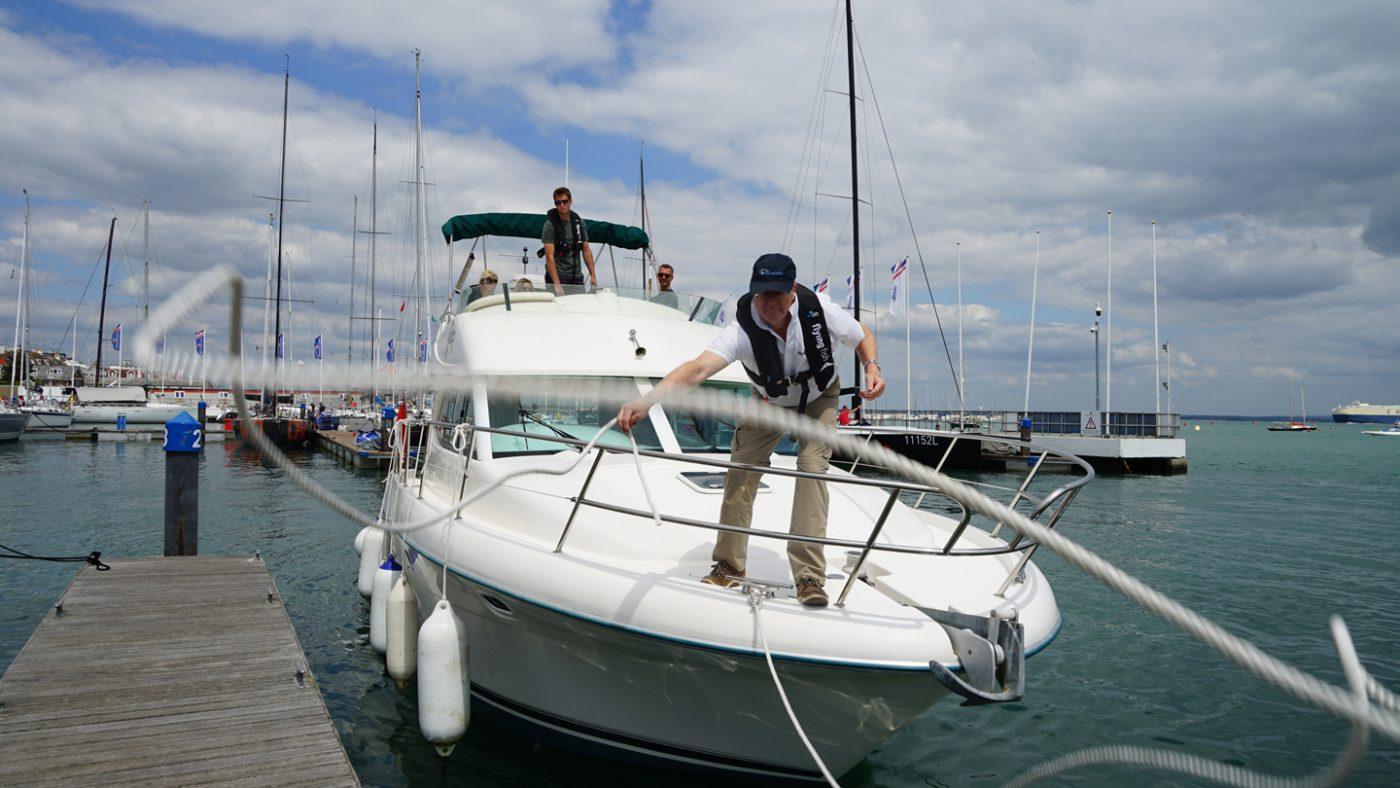
Power or Sail
Whether you qualify as a Yachtmaster Power or sail depends, of course, if you are a sailor or enjoy the power side of yachting. Your decision to choose Yachtmaster sail or power oftern depends on your career choise. For a Superyacht Deckhand working on a large motor yacht then the obvious route would be Yachtmaster Power however, if your carreer path is on sailing yachts then its Yachtmaster sail – some choose both.
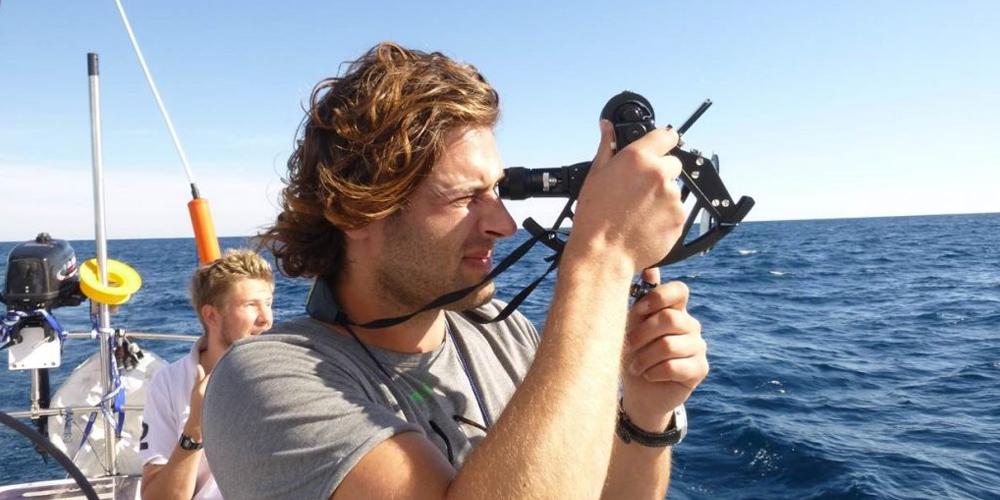
Yachtmaster Coastal, Offshore or Ocean?
There are three different Yachtmaster qualifications to choose from. The path you take depends on your goal.
Yachtmaster Coastal : Allows the holder to skipper a yacht up to 60 miles from shore, day or night. If you own your own boat or are a local sailor, who doesn’t want to go offshore but would like to build confidence in coastal waters then choose this option.
Yachtmaster Offshore : Most popular route . Allows the holder to skipper a yacht up to 150 miles from shore, day or night. If you want to work as a commercial skipper or see yourself progressing in the Superyacht Industry then you will need your Yachtmaster Offshore qualification.
Yachtmaster Ocean : Allows the holder to take a yacht on an ocean passage. Popular with skippers who hold Yachtmaster Offshore who want to progress and skipper yachts across the Atlantic.
Ready to launch your Yachtmaster career?
Now you have chosen your perfered route, power or sail, then the next question is how to I get there? below are some great options to choose from.
If you are still not sure then simply get in touch with us today, and we’ll help you get the ball rolling.
Yachtmaster Power
Our Yachtmaster Power and Theory and practical course programmes take place in Cowes, Isle of Wight.
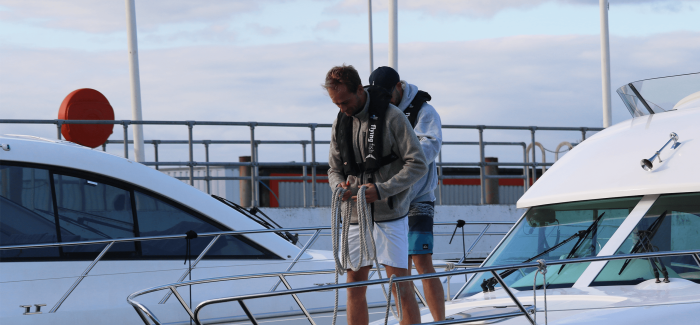
Yachtmaster Power Theory and Practical
Combines both RYA Yachtmaster Theory and the practical prep week. The Course price included the £241 exam fee.
£2,460
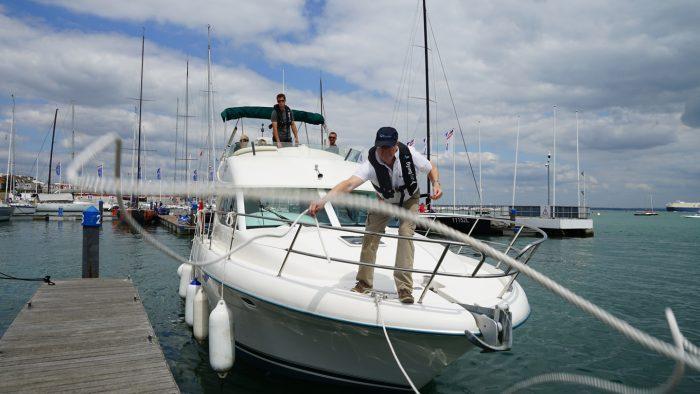
Yachtmaster Power Prep Course
To prepare you for the RYA Yachtmaster Power Exam. The Course price included the £241 exam fee.
£2,040
Yachtmaster Sail
From beginner to Yachtmaster. All our training and race programmes take place in Sydney, Australia.
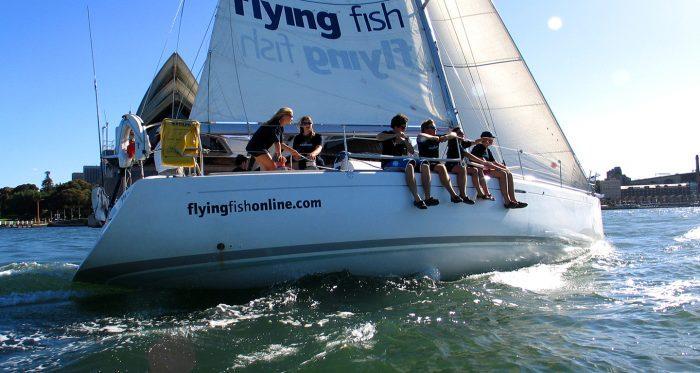
Yachtmaster Coastal Course
Our Yachtmaster Coastal course takes you from novice sailor to RYA Yachtmaster Coastal in 9 weeks
From £7,722

Yachtmaster Offshore Course
£10,790
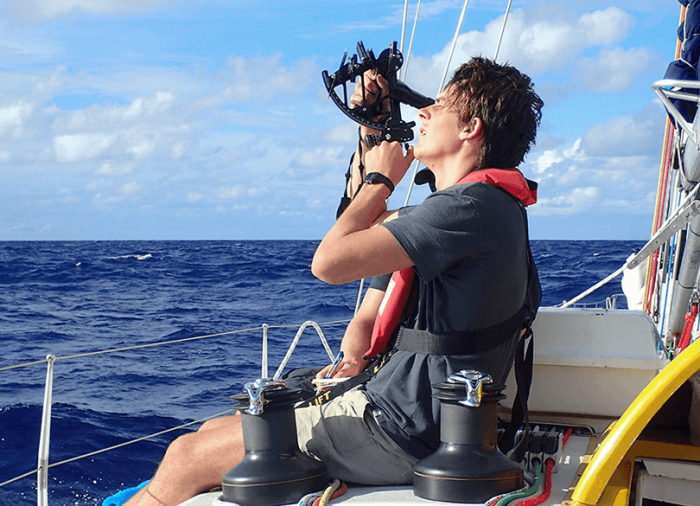
Yachtmaster Ocean Course
Our Yachtmaster Ocean Course takes you from beginner to Yachtmaster Ocean in 16 weeks.
£14,199
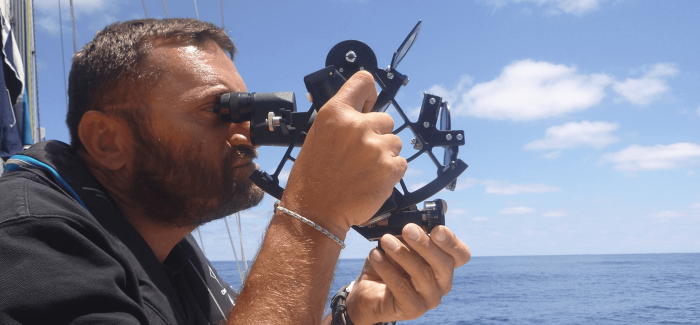
Yachtmaster Ocean Theory and Passage
This course is for sailors who hold the RYA Yachtmaster Offshore certificate and want to qualify as Yachtmaster Ocean.
£4,540
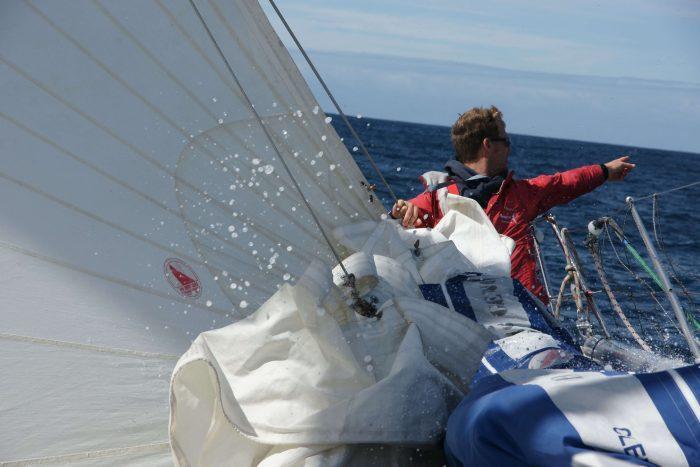
Sydney Hobart Race
The Sydney to Hobart yacht race is arguably the world’s most prestigious and toughest ocean yacht race
£6,813

IMAGES
COMMENTS
The Yachtmaster Coastal Fast-Track in Sydney takes you from novice sailor to RYA Yachtmaster Coastal Certificate of Competence. 9 weeks. $14,590.00. View detail & dates. Yachtmaster Offshore Fast Track. ... Flying Fish pioneered Yachtmaster Fast-Track training in the UK in 1993. In 1996 we ran our first Fast Track course in Australia.
RYA Coastal Skipper/Yachtmaster Theory. 40 hours eLearning and 6 virtual evening sessions with an RYA Yacht Master Instructor. $1695. Or Online (40 hours + exams) in your own time $750 - Course materials posted. RYA Coastal Skipper Practical 5 days and 4 nights onboard. $2350 on monohull Beneteau 38.1.
An RYA/MCA Yachtmaster Certificate is the benchmark qualification for professional yacht captains and a passport to worldwide employment in the yachting industry. For recreational skippers, it is a validation of competence and substantial personal achievement. Ready for time out? Join a Yachtmaster Fast Track course in Sydney
Our Fast Track course will provide you with approx 500 miles and 20 days of sea time and 14 days of classroom theory. The RYA Yachtmaster certificate requires 50 days and 2,500 miles. The exam for RYA Yachtmaster can be taken once the miles have been accumulated. If you already have 1,500 miles and 30 days logged experience, by completing the ...
In 1993, Flying Fish pioneered fast-track courses for Yachtmasters and Watersports Instructors in the UK and Greece. In 1996, we ran our first Yachtmaster programme in Sydney and incorporated Flying Fish Australia shortly afterwards. Today, in Sydney, we proudly host over 2000 customers annually, offering a wide range of courses for sailors ...
A Yachtmaster Offshore is capable of skippering the yacht on extended offshore passages by day or night. The instructor will assess your strengths and weaknesses and coach you in the areas required to pass the examination. We will provide extra training in passage planning, man overboard recovery, close quarters handling, skippering techniques ...
The Flying Fish Yachtmaster Offshore Fast Track in Sydney takes you from novice sailor to the RYA Yachtmaster Certificate of Competence. 12 weeks $18,990.00 . ... This one day course is for the Sydney boating enthusiast who wants a basic understanding of the operation and maintenance of an outboard motor. We teach you how to take simple ...
The Yachtmaster Ocean is the highest qualification awarded by the RYA. Recognised worldwide, the Yachtmaster Ocean certificate proves you have the knowledge, experience, and confidence to skipper a yacht across an ocean. The Yachtmaster Ocean Certificate of Competence allows the holder to skipper a yacht on an Ocean passage of any length.
Overview. An RYA Yacht Master certificate of competence is often the ultimate aim of aspiring skippers. It is a well known, highly respected qualification worldwide, proving your experience and competence as a skipper. Unlike other courses in the cruising program, there is no formal training to complete in order to become a Yacht Master.
or, hold a space for 48hrs. £850. £4,540. £6,813. Based on over 250 Google reviews. . The Yachtmaster Ocean course in Sydney, Australia takes you from novice to qualified RYA Yachtmaster Ocean in 16 weeks. Call 01983 280641.
The RYA Yachtmaster Offshore Preparation Course teaches the skills and techniques required to skipper safely on offshore passages by day and by night, including passage planning, preparation for sea, pilotage, yacht handling under sail and power, as well as in adverse weather conditions and emergencies. The first five days of this seven-day ...
The Yachtmaster Ocean Fast Track in Sydney first trains you for your RYA Yachtmaster Offshore Certificate. Then, you go on to learn celestial navigation and complete an ocean-qualifying passage in preparation for the RYA Yachtmaster Ocean oral exam. ... By simply adding a one-week STCW Basic Safety course, an RYA Yachtmaster Ocean theory and ...
Ocean Boardroom provides accredited sailing courses including marine radio, vhf radio licence, coastal navigation, sea safety & survival, boat engine maintenance and yacht master courses. Choose online sailing courses or learn in-person in Sydney.
The Yachtmaster Ocean Fast Track in Sydney first trains you for your RYA Yachtmaster Offshore Certificate. Then, you go on to learn celestial navigation and complete an ocean-qualifying passage in preparation for the RYA Yachtmaster Ocean oral exam. 16 weeks $24,990.00. Event information is currently unavailable. Please try again in a few moments.
The programme combines the RYA Yachtmaster Ocean Theory course with an exhilarating Pacific ocean qualifying passage. 4 weeks $7,990.00 incl. GST. ... (formerly ISAF), RYA and AS for crew planning to take part in offshore yacht races like the Sydney to Hobart race. The course is also highly recommended for anyone going to sea for any purpose.
The virtual training sessions are run from 1800 to 2100 (Sydney time) midweek evenings this is the course for you. The course is first class and delivered by our expert RYA Yachtmaster Instructors. ... The RYA Coastal Skipper / Yachtmaster eLearning theory course build on the basics of navigation, meteorology and passage making taught in the ...
The RYA Coastal Skipper course at Sunshine Sailing Australia is designed for advanced sailors ready to elevate their skills. Offered in Brisbane, the Gold Coast, the Sunshine Coast, and Moreton Bay, this course focuses on advanced navigation, passage planning, and pilotage. You'll gain hands-on experience in complex decision-making and yacht ...
Plot your own course to Yachtmaster or up-skill in specific areas with our short-course options. ... Gain a package of internationally recognized qualifications and enjoy an inspiring training adventure on Sydney Harbour. 4 weeks. $5,990.00. View detail & dates. Dinghy Sailing - Start Sailing (Level 1) ...
Flying Fish run all Yachtmaster Offshore courses in Sydney, Australia. Training in Sydney offers so much more than the hot climate. You will learn to sail on the beautiful Sydney Harbour and offshore along the East Coast of Australia. Customers are encouraged to go racing with yacht owners at Middle Harbour Yacht Club or join Flying Fish ...
Flying Fish is well known for our Yachtmaster Offshore Courses in Sydney. We have been running Yachtmaster training courses in Australia since 1995 and have seen thousands of customers achieve their dream. Sydney is known for its relaxed, cosmopolitan lifestyle, incredible beaches, and great surf. You sail hard during the day and unwind on the ...
On this course you will learn practical skippering techniques. Completion of a Day Skipper Theory course beforehand will greatly enhance the value of this practical course. Previous experience necessary: The RYA recommends the following experience as a minimum - 5 days sailing, 100 miles, 4 night hours plus knowledge up to Day Skipper Theory standard.
Discover the joy of sailing with Flying Fish Sailing School, Sydney's leading provider of professional sailing courses. Whether you're a complete beginner or seeking advanced professional certifications like the RYA/MCA Yachtmaster Ocean and AMSA Sailing Master, we have the perfect course for you. "I must go down to the seas again to the lonely sea and the sky" - John Masefield.
The RYA Yachtmaster Offshore has long been the qualification that cruising yacht sailors, both amateur and professional, have aspired to. Quite aside from the fact that it is the gateway to working in the yachting industry if the desire so takes you, it is good to know that you have mastered the sweep of skills and experience necessary for you to be deemed competent at skippering a sailing yacht.
Flying Fish run Yachtmaster training courses in Sydney, Australia. Contact us for more details. Skip to content Yachtmaster. Sail; Yachtmaster Ocean Course ... Our Yachtmaster Ocean Course takes you from beginner to Yachtmaster Ocean in 16 weeks. 110 day(s) | £14,199. View course.